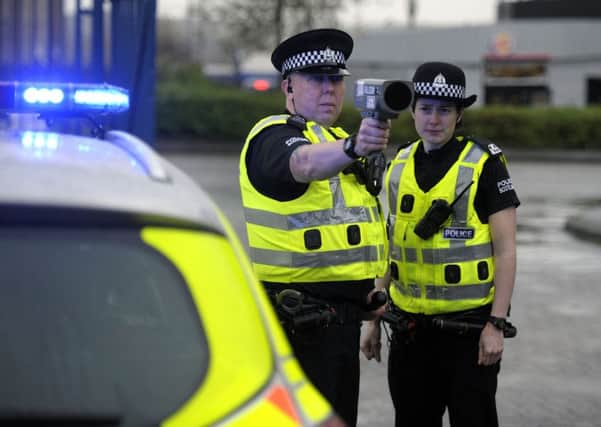A74 ‘worst for speeding’, as 6,000 drivers caught


Stretches of the A74(M) accounted for half of the ten worst roads in Scotland for speeding offences detected by the vans last year.
More than 6,000 motorists were caught breaking the motorway’s 70mph limit at the five locations, most of them car drivers.
Advertisement
Hide AdAdvertisement
Hide AdA total of 1,883 were snapped near Kirkpatrick Fleming, 1,696 near Abington, 962 near Lockerbie, 853 near Beattock and 743 near Ecclefechan. The highest speed was recorded at Beattock, of 125mph.
The other roads where camera vans caught the most speeders were the M80 at Dunipace (1,437), the A90 between Edinburgh and South Queensferry (1,090), Houston Road in Livingston (946) and the M9 at Kinnaird (685).
Vans deployed on a dual carriageway stretch of the A9 near Dunblane caught the most speeders last year – 3,296. However, it is now covered by average speed cameras.
Mobile camera vans are deployed across Scotland, at sites such as in lay-bys and on flyovers. They are the only speed cameras in use in the Highlands, the north-east, central Scotland and Dumfries and Galloway, apart from the average speed cameras on the A9 between Dunblane and Inverness.
The figures, obtained by Scotland on Sunday from Police Scotland under freedom of information laws, also included the fixed speed camera sites which recorded the most offences.
The force declined to provide their locations to prevent drivers finding out which sites were in most frequent use, as cameras are rotated between them.
However, it is understood the fixed camera site which caught the most speeders was on the A90 near Stonehaven.
It snapped 4,378 motorists, including 669 lorry drivers, with one car driver caught doing 122mph.
Advertisement
Hide AdAdvertisement
Hide AdRoad safety charity Brake expressed anger that so many drivers were still speeding.
Spokesman Gary Rae said: “It’s shocking to see that so many drivers have a blatant disregard for speed limits and red lights on Scotland’s roads.
“These incredibly dangerous actions put their lives and the lives of others at risk.
“Brake fully supports the use of all speed cameras as there is overwhelming evidence they are a highly effective way of reducing speeding, which is crucial in making our roads safer and preventing devastating tragedies.”
Motoring groups called for offenders to be put on refresher courses.
Neil Greig, the Scotland-based policy and research director of the Institute of Advanced Motorists, said: “It’s still shocking to see such high speeds being recorded on cameras which have been in place for years.
“Even the locations of mobile units are well known to the majority of drivers, but some still fail to see them. Such standards of observation are a worry.
“Issuing fines alone is clearly not getting the message across, and these figures once again underline the need for a speed awareness course option in Scotland to try and address driver errors.”
Advertisement
Hide AdAdvertisement
Hide AdSteve Gooding, director of the RAC Foundation, said: “These figures show police are using a range of camera technologies to catch a range of offences.
“But the high numbers also beg the question: how do we deter irresponsible behaviour rather than simply record it?”
Transport minister Derek Mackay is considering the introduction of speed awareness courses for speeders, which are run in England.
Police Scotland said speed cameras were deployed only at road safety trouble spots and were regularly reviewed.
Chief Superintendent Iain Murray, its head of road policing, said: “Fixed and mobile cameras are deployed according to criteria set down in the Scottish Safety Camera Programme handbook.
“This is based on collision data and speed analysis, and it has been shown that a mix of both types of cameras is appropriate to positively influence driver behaviour.
“There is a requirement to review all sites on a rolling, three-year programme.”